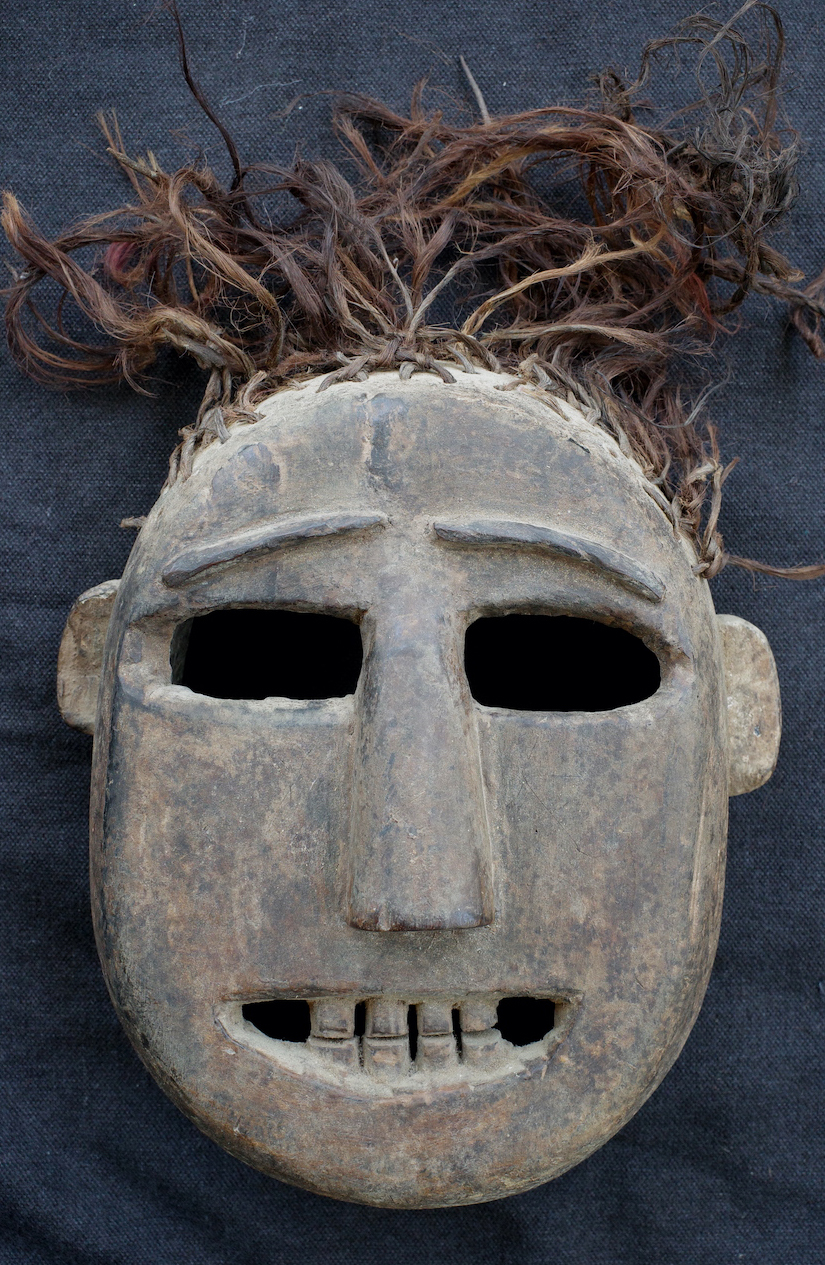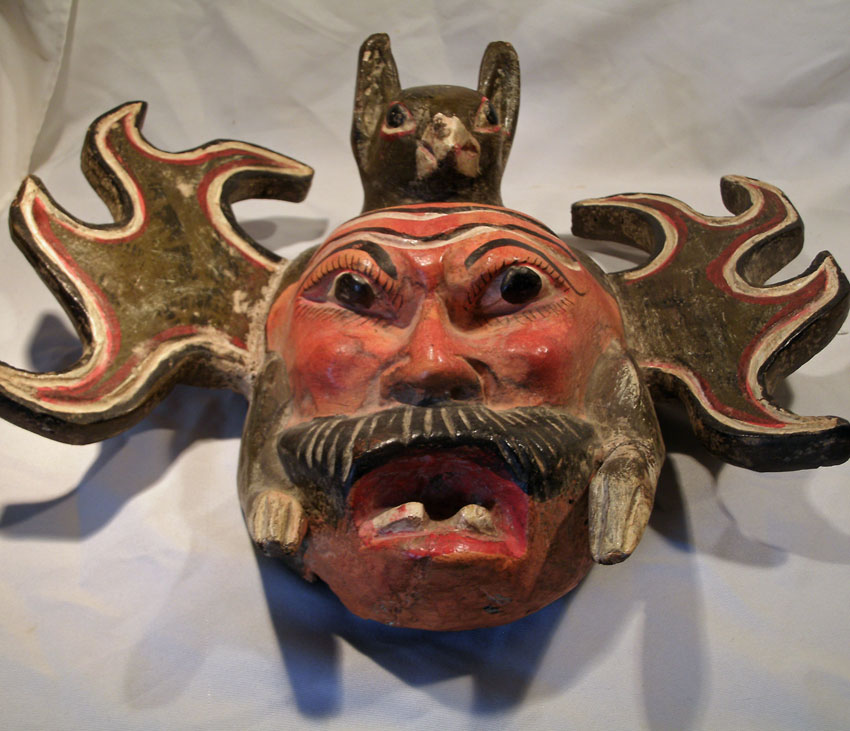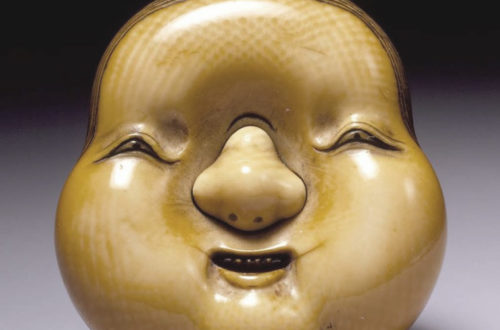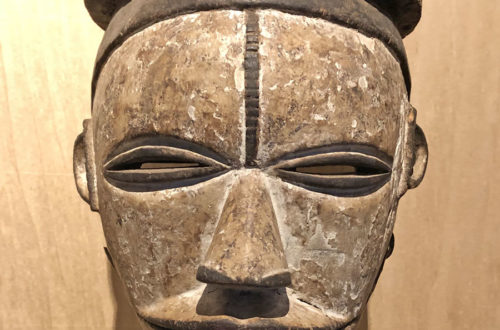 Q: This mask was acquired from Himachal Pradesh, India, from the granddaughter of the Tibetan man who collected it. It was acquired by him more than 60 years ago, allegedly in Tibet. It is certainly a Himalayan mask, though whether it comes from Tibet or Nepal I’m unsure. It resembles some Magar shamanic masks, but it might also be a Cham mask, of a comic ancillary character that performs between dance routines. I lean towards the former. But any commentary is welcome. The mask is made of wood and very old. The hair on the scalp might be human or yak.
Q: This mask was acquired from Himachal Pradesh, India, from the granddaughter of the Tibetan man who collected it. It was acquired by him more than 60 years ago, allegedly in Tibet. It is certainly a Himalayan mask, though whether it comes from Tibet or Nepal I’m unsure. It resembles some Magar shamanic masks, but it might also be a Cham mask, of a comic ancillary character that performs between dance routines. I lean towards the former. But any commentary is welcome. The mask is made of wood and very old. The hair on the scalp might be human or yak.
David, 1697
A: The mask I posted for you two days ago was also an authentic Himalayan, but this one probably comes from the highlands of Nepal to the southeast. Both masks are quite primitive in appearance. Let’s hope that a viewer with interest in Himalayan folk art will have something to write in the comment box.
Here’s some copy I found online: “Nepalese and Tibetan masks are one of the symbols that better represent the culture and traditions of people living in the Himalayan region. The ritual of wearing masks is very old and it comes from animists Himalayan tribes used to worship spirits of nature and guardians of these majestic mountains. The Shamans of these tribes used to wear masks during rituals they use to perform in order to protect the village, heal diseases, practice exorcisms or other purposes.
“Masks supposedly had a very important functions in the social life of these community as they were used also during theatrical representations and ceremonies dedicated to ancestors. Hindu and Buddhist cultures, that became dominant in the surrounding regions, slowly replaced the myths of this shamanic cult. Even spirits and demons were adopted by the Buddhist tradition and some of them became wrathful protectors of the Buddhist doctrine.” A






